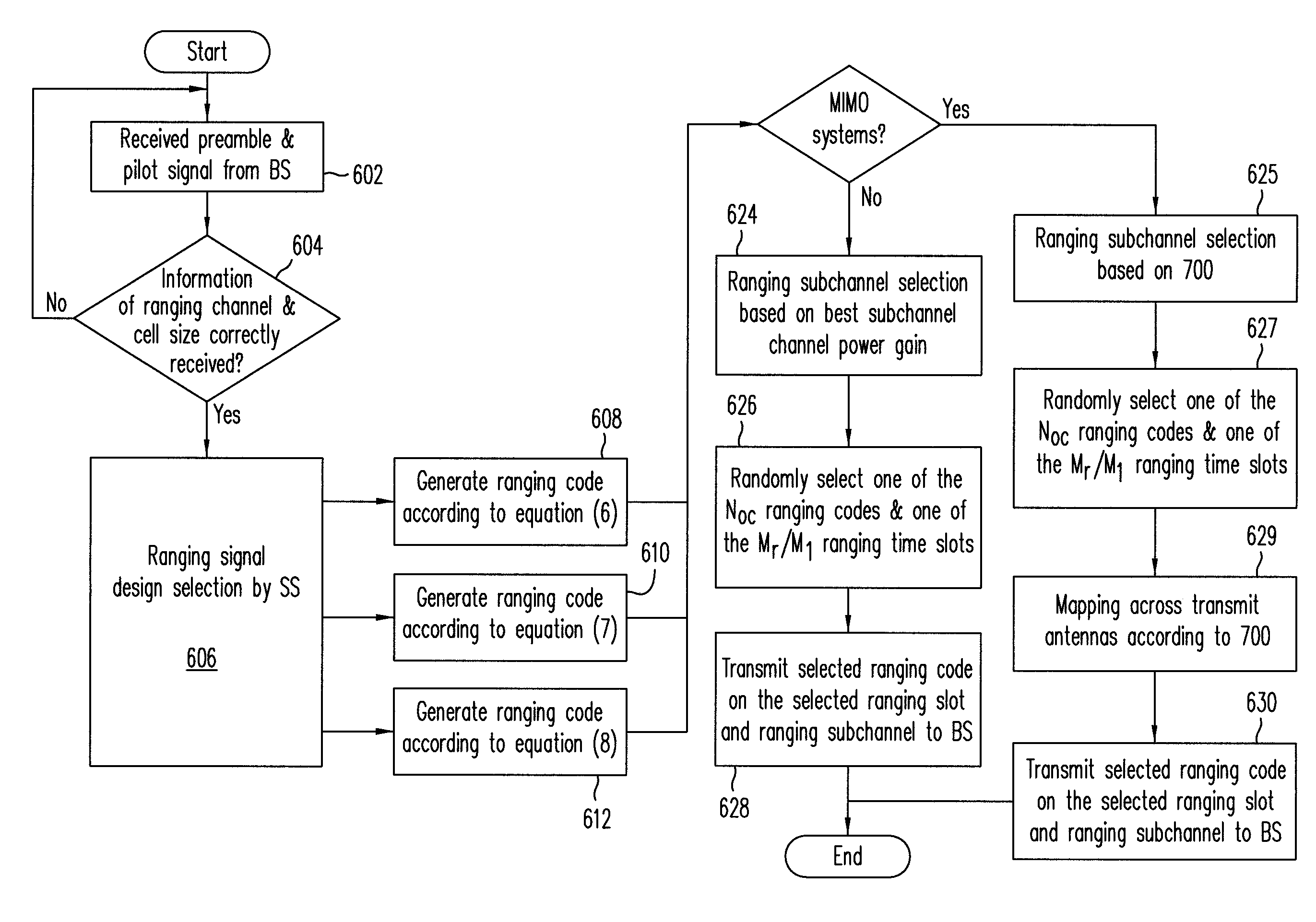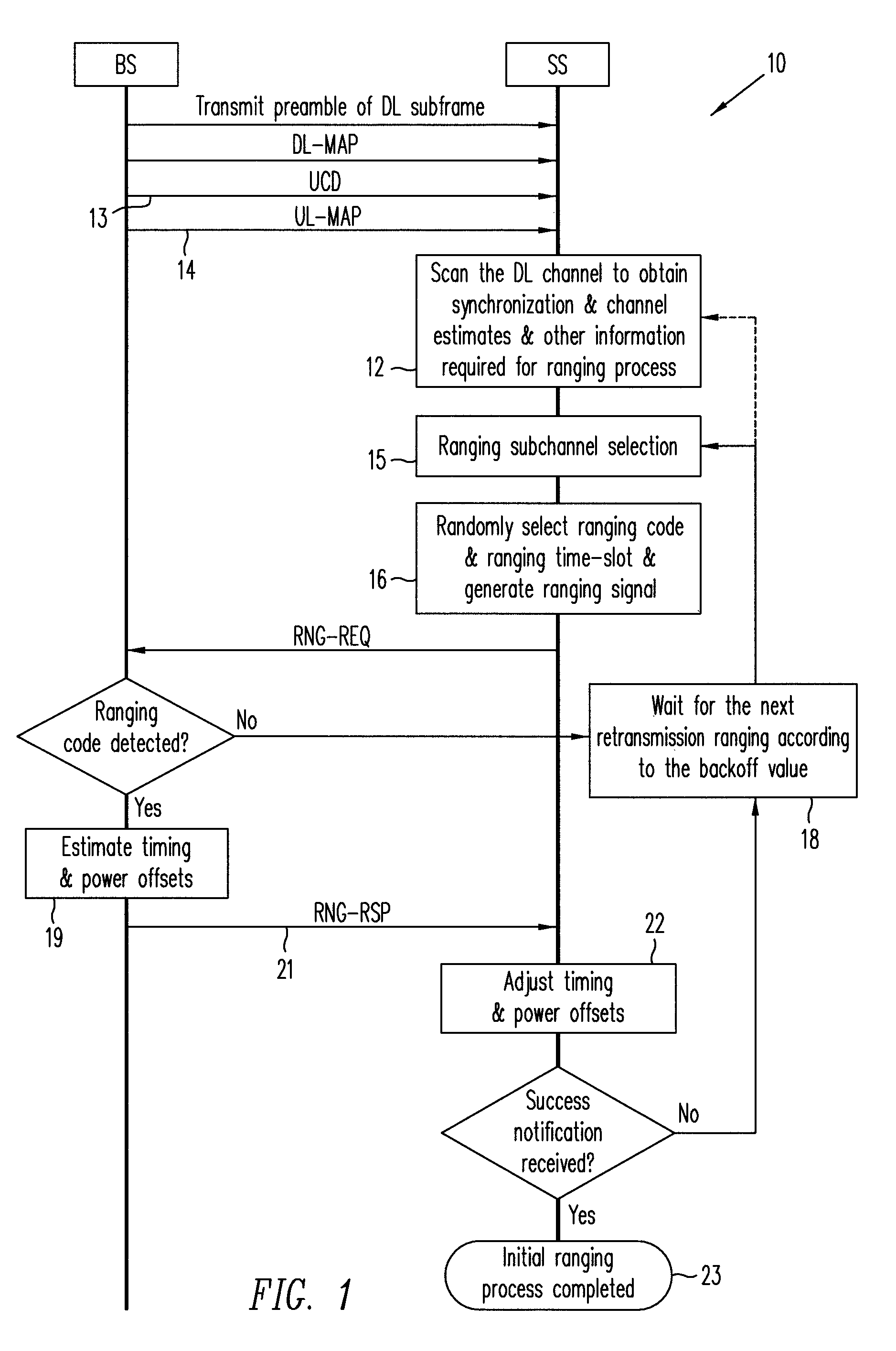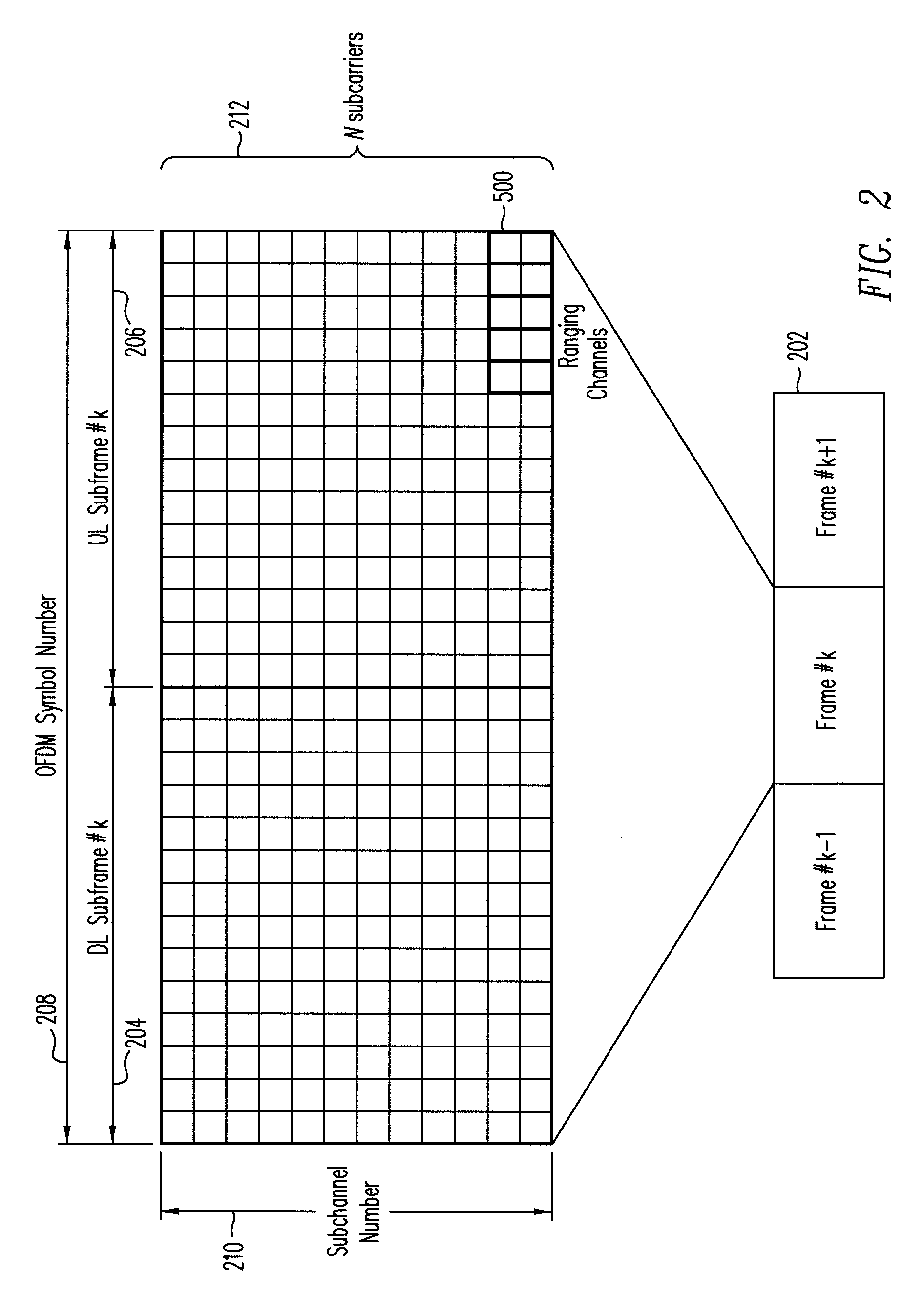Method of ranging signal design and transmission for MIMO-OFDMA initial ranging process
a signal design and signal transmission technology, applied in the field of wireless communication ranging methods, can solve the problems of multiuser interference, high complexity of such an implementation, and increase the latency and access delay of the overall network, and achieve the effects of high computational complexity, high power consumption, and best performan
- Summary
- Abstract
- Description
- Claims
- Application Information
AI Technical Summary
Benefits of technology
Problems solved by technology
Method used
Image
Examples
Embodiment Construction
[0028]In an OFDMA communication system using TDD, a ranging process is required to accurately synchronize timing between each SS and the BS, and to adjust the transmit power of each SS in the UL. Such UL timing synchronization and power control operations suppress interferences, avoid near-far problems, and hence maintain reliable multiuser wireless links. Existing OFDMA systems (e.g., systems under the IEEE 802.16a and IEEE 802.16e3 standards) define a ranging process for UL synchronization and power control. In this detailed description, a “ranging signal” is a signal transmitted by a SS to help the BS acquire UL timing and power information. The “ranging channel”, here, refers to the total system resources (i.e., subcarriers and time slots) reserved for the ranging process, and may contain several ranging subchannels (i.e., groups of subcarriers). A “ranging time slot” refers to a predefined number of OFDM symbol intervals for a ranging transmission. The UCD / UL-MAP message contai...
PUM
 Login to View More
Login to View More Abstract
Description
Claims
Application Information
 Login to View More
Login to View More - R&D
- Intellectual Property
- Life Sciences
- Materials
- Tech Scout
- Unparalleled Data Quality
- Higher Quality Content
- 60% Fewer Hallucinations
Browse by: Latest US Patents, China's latest patents, Technical Efficacy Thesaurus, Application Domain, Technology Topic, Popular Technical Reports.
© 2025 PatSnap. All rights reserved.Legal|Privacy policy|Modern Slavery Act Transparency Statement|Sitemap|About US| Contact US: help@patsnap.com



